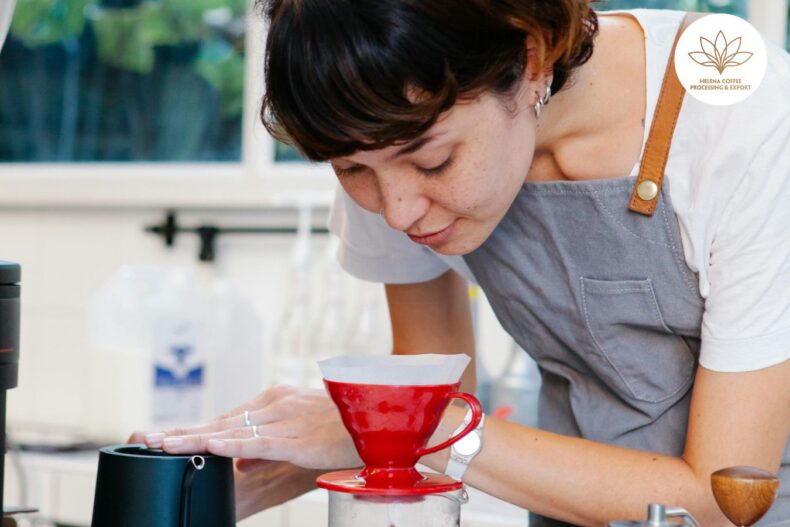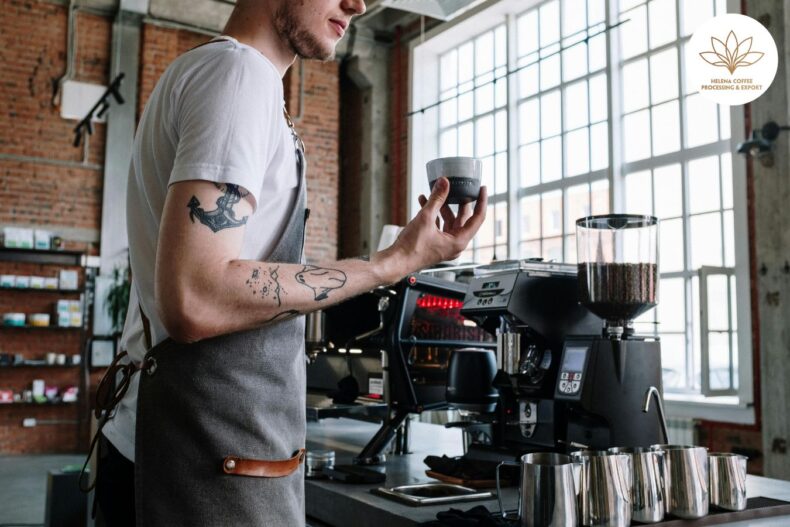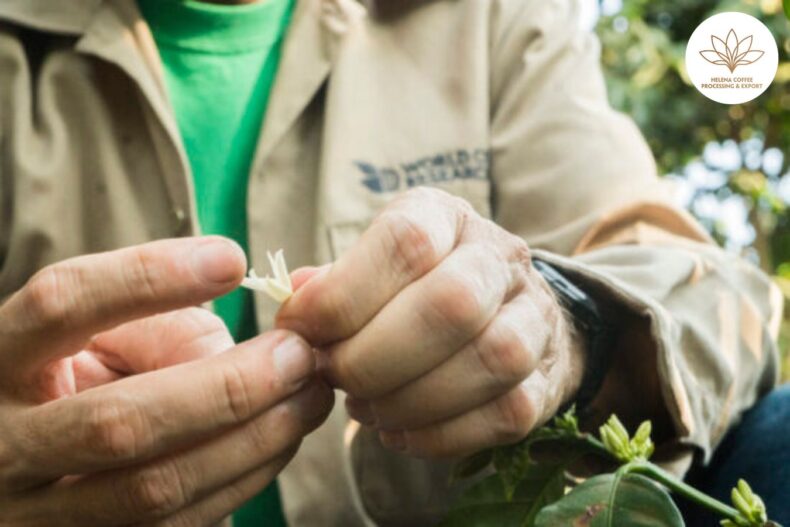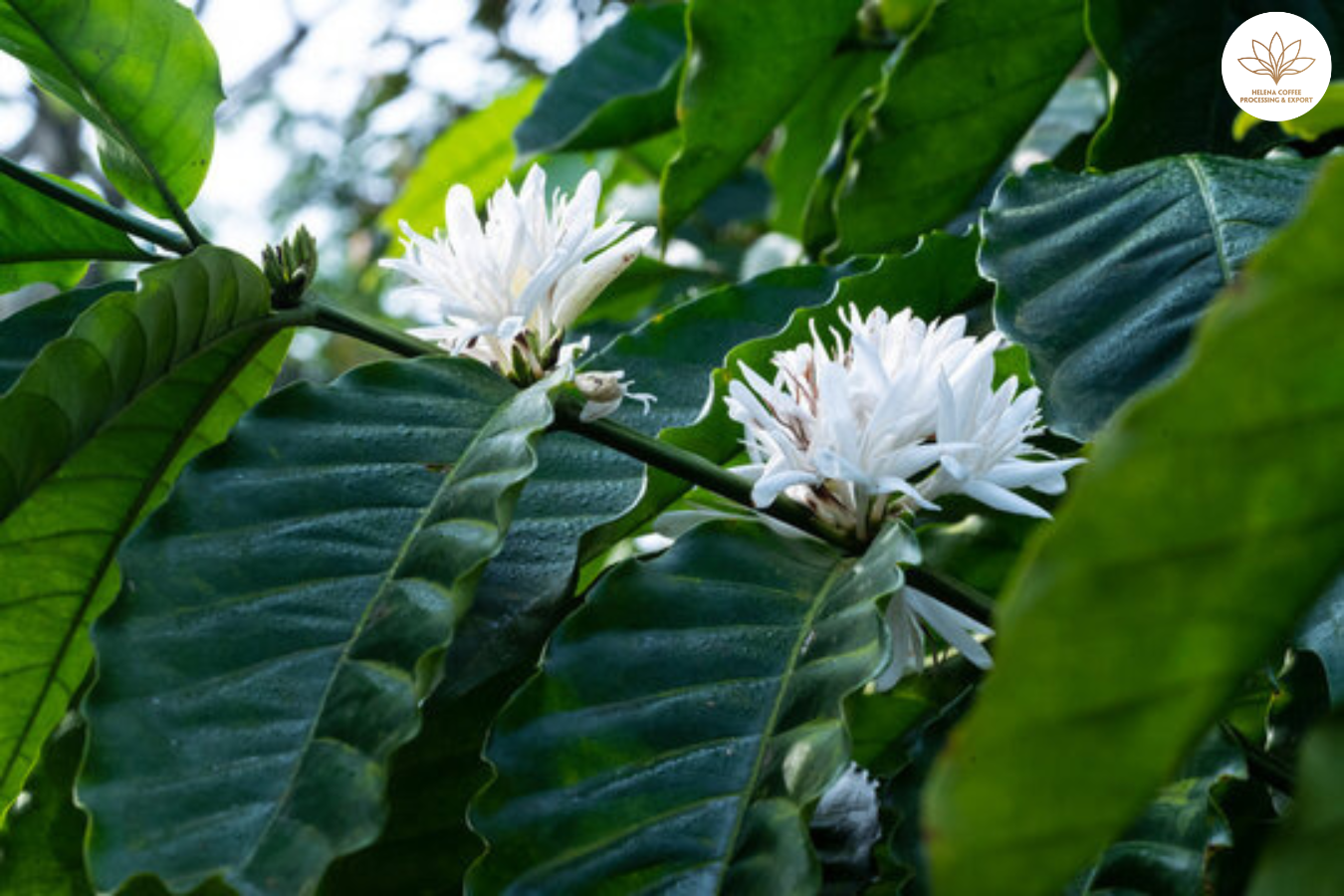
use coffee flowers: In the coffee farms scattered across the Bean Belt, the appearance of white, aromatic flowers marks a crucial phase in the life cycle of coffee plants. Assessing these blossoms allows farmers to gauge the forthcoming productivity of their coffee plants for the season, enabling them to plan and prepare for the upcoming months accordingly.
The timing of the blooming season varies depending on the geographical location and climate. Nevertheless, one certainty prevails: the eventual shedding of these flowers from the coffee plants.
What unfolds next with coffee flowers largely lies in the hands of producers. However, as an increasing number of farmers seek to diversify their income by repurposing coffee waste, there arises a potential opportunity to maximize the utility of coffee flowers and, consequently, reduce waste.
To delve deeper into this prospect, I engaged in conversations with Lívia Macarini Pereira, an Agronomic Specialist at Daterra Coffee in Brazil, and Brandon von Damitz, a coffee producer and co-founder of Big Island Coffee Roasters in Hawaii. Explore further to gain insights into this intriguing initiative.
WHY DO COFFEE PLANTS UNDERGO FLOWERING?
Typically, coffee plants initiate the flowering phase approximately three to four years after being planted, with the blooming period lasting around two to three months. Each bud has the potential to produce up to four flowers, arranged in clusters along the axis or stem of the leaves.
Lívia emphasizes the critical role of the flowering stage in coffee production, pointing out that coffee plants feature both male and female gametes within the same flower. While arabica is a self-pollinating plant, robusta relies on cross-pollination facilitated by insects.
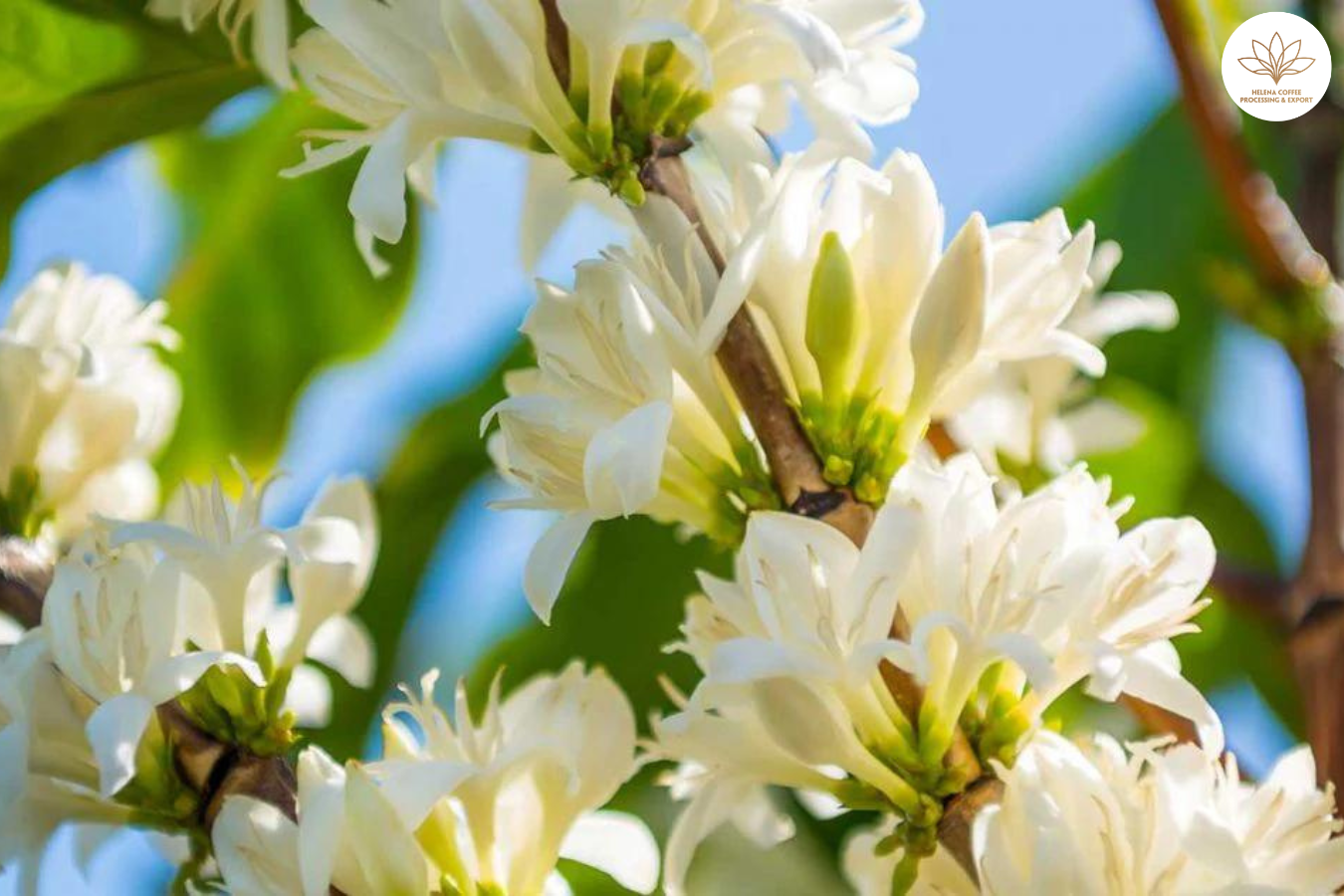
“Colorful flowers with nectar attract insects, aiding in the pollination process,” she explains. “This transfer of pollen from male to female structures is vital for robusta plant reproduction.”
Heavy rainfall is a prerequisite for the commencement of the blooming phase, as Lívia notes, stating that coffee plants absorb significant water before initiating flowering. Brandon further underscores the weather’s influence, highlighting that flowers emerge after one to two months of dry weather, followed by substantial rainfall. The peak of flower production usually occurs one to two months after the harvest season concludes.
Temperature also plays a crucial role, with the optimal range for initiating the flowering process falling between 19ºC and 24ºC (68ºF and 75.2ºF).
Post the initial rains of the season, buds on coffee plants begin to blossom. To ensure healthy and robust growth, it is customary for workers to refrain from disturbing the plants during this period, often leading to a temporary departure from the farm.
WHAT OCCURS WHEN COFFEE PLANT FLOWERS DESCEND?
A pivotal aspect in the flowering process of coffee plants is the emphasis on uniformity. Essentially, consistent blossoming signifies that the cherries will ripen uniformly, enabling producers to harvest higher-quality coffee and reduce the time spent handpicking ripe cherries.
Brandon underscores the significance of flowers as a precursor to future fruit, expressing that a robust and abundant display of flowers is coveted by every coffee farmer. This abundance not only signifies a promising yield potential but also serves as an indicator for producers to diligently care for their coffee plants, addressing issues like the spread of the coffee berry borer.
“These insects pose a threat to coffee cherries, with some species even targeting the seeds, potentially diminishing coffee quality and yields,” Brandon explains. “Farmers must be vigilant, applying fertilizers and implementing plant treatment protocols as cherries form and mature.”
Despite healthy growth and consistent blooming, the inevitability of flowers falling off the plants looms. Lívia describes the post-peak blooming phase, during which the flowers linger on the plant before eventually withering and darkening. Subsequently, they detach from the plant and promptly commence decomposition on the ground.
“In essence, they undergo natural recycling as compost, releasing nutrients into the soil,” Lívia elaborates. Both Lívia and Brandon highlight that coffee flower petals decompose at an accelerated rate compared to other plant tissues, owing to their higher nutrient concentrations. Coffee plants then absorb these nutrients, contributing to overall robust and healthy growth.
ALTERNATIVE APPLICATIONS FOR COFFEE FLOWERS BY PRODUCERS
Amidst the coffee industry’s escalating commitment to waste reduction, certain coffee professionals are innovatively exploring ways to repurpose byproducts, particularly during the production phase. Notable endeavors include:
- Marketing cascara (the pulp and skin of the coffee fruit) as tea.
- Transforming coffee husk (comprising the skin, mucilage, pulp, and parchment of the coffee cherry) into various products, including biocomponents, bacterial inhibitors, biogas, items for food production, and animal feed.
- Incorporating coffee leaves into formulations for perfumes, facial cleansers, deodorizers, and tobacco substitutes.

Heavy rainfall is a prerequisite for the commencement of the blooming phase
While these initiatives contribute to minimizing waste in coffee production, they typically generate relatively minor revenue when compared to traditional coffee sales. Consequently, they often serve as auxiliary projects for producers rather than primary income drivers.
Nevertheless, it’s crucial to recognize that, unlike some other coffee waste byproducts, flowers have a unique utility as natural fertilizers, inherently aligning with a circular economy model in the coffee industry.
However, this doesn’t preclude the possibility of producers leveraging coffee flowers for potential income diversification. Among the more prevalent methods is the sale of coffee flowers as tea or other beverage options.
UTILIZING COFFEE FLOWERS FOR TEA AND HERBAL INFUSIONS
Brandon from Big Island Coffee Roasters sheds light on the utilization of flower petals in crafting their coffee blossom tea—a herbal infusion comprising dried coffee flowers and other complementary ingredients that can be steeped in hot water.
“The flowers are harvested directly from the plant once they begin to wilt,” Brandon explains, emphasizing that the resulting tea boasts delicacy, sweetness, and a floral essence.
For an optimal cup of coffee blossom tea, Brandon suggests using 1g of dried coffee blossoms per 200g of water, allowing it to steep for ten minutes. He notes the careful selection of flowers, as they can only be collected in specific climatic conditions. Brandon emphasizes the time-sensitive nature of this process, acknowledging that producers and farm workers are often occupied with various activities, making the collection and drying of coffee flowers a challenging task.
In the realm of specialty coffee, where experimental processing methods are gaining popularity, including infused and flavored coffees, some farmers are venturing into the incorporation of coffee flowers in their post-harvest processing techniques.
Lívia shares insights from Daterra’s 2018 experiment, where flower petals were collected to explore their impact on flavor profiles and coffee quality enhancement.
“We harvested flowers right after blossoming and introduced them to dried coffee cherries under two different conditions: aerobic (with oxygen) and anaerobic (without oxygen),” she explains. “The results were remarkable, with both conditions leading to an elevated cup score and enhanced flavor complexity.
“However, it’s crucial to note that we harvested the flowers at a pivotal phase, causing significant damage to the flowering process,” she adds.
The flowering phase is a crucial period in the growth cycle of coffee plants. However, at the same time, it’s clear that producers can also use coffee flowers to add more value to their products.
Moreover, income diversification can be valuable for coffee farmers. But ultimately, the growing market for selling coffee flowers – whether as tea or other products – still remains very small.
FAQS:
